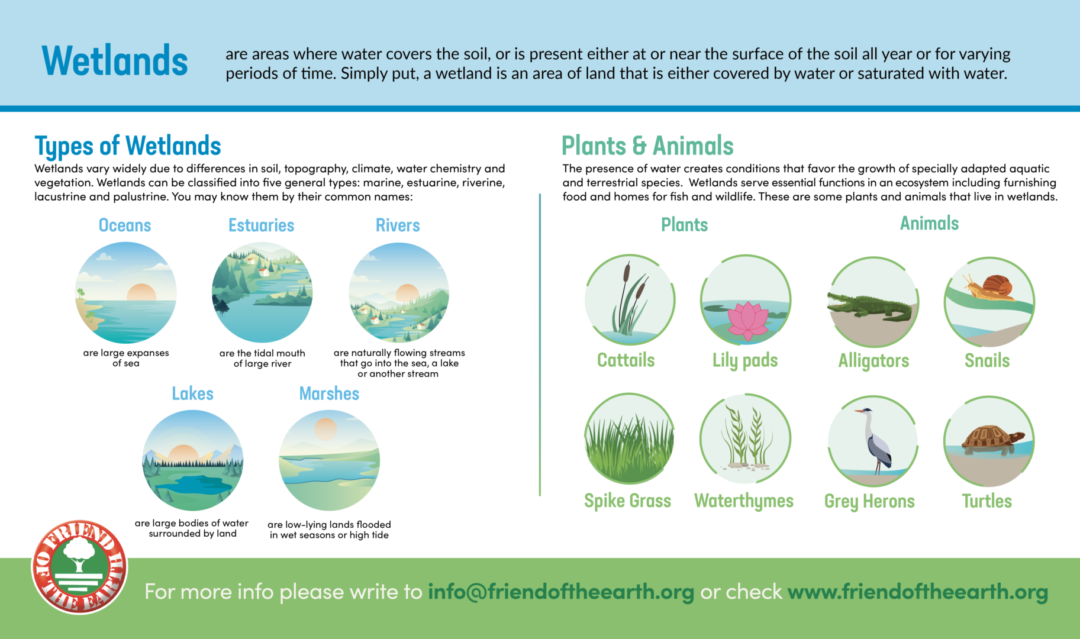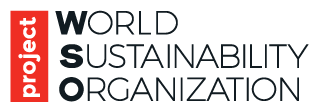Save the wetland campaign
Wetlands occur wherever water accumulates for enough long periods that allow the establishment of plants and animals adapted to the aquatic environment.
Wetlands contain biodiversity of exceptional conservation significance, with many unique ecosystems and a wide array of regionally and globally threatened species. At the same time, they typically form an essential component of local, national, and even regional economies, as well as underpinning the livelihoods of local communities.
The most recent estimate of global inland and coastal wetland area is more than 12.1 million km2, an area almost as large as Greenland. Of this, 54% is permanently inundated and 46% seasonally inundated. An estimated further 5.2 million km2 are intermittently or occasionally inundated.
The largest areas of wetlands are in Asia (31.8% of the global area), North America (27.1%) and Latin America and the Caribbean (15.8%). Wetland areas in Europe (12.5%), Africa (9.9%) and Oceania (2.9%) are smaller (Davidson et al. 2018).
The Problem
About half the global wetland area has been lost due to unsustainable agriculture practices, urbanization, and pollution, but an international treaty (the 1971 Ramsar Convention) has helped 172 nations protect the most significant remaining wetlands. Populations of wetland-dependent species are declining, and many are threatened.
Because most nations lack wetland inventories, changes in the quantity and quality of the world’s wetlands cannot be tracked adequately. Despite the likelihood that remaining wetlands occupy less than 9% of the earth’s land area, they contribute more to annually renewable ecosystem services than their small area implies. Wetlands are vital for human survival. They include some of the world’s most productive ecosystems and provide ecosystem services leading to countless benefits (MEA 2005; Russi et al. 2013).
Contaminants in wetlands are an emerging concern. Pharmaceuticals, hormones, industrial chemicals, personal care products and many others are continually evolving and often detected at concentrations higher than expected (Sauvé & Desrosiers 2014).

Possible Solutions to save the wetlands
Effective policy and management for wise use need a good understanding of the drivers of change in wetlands so that the root causes of wetland loss and degradation can be addressed.
Responses must address many challenges simultaneously.
Enhancing the network of Ramsar Sites, and of other protected and conserved areas, ensures a conservation framework.
Other tools are also needed: legal and policy instruments, economic and financial incentives, and sustainable practices that use wetland resources. Capacity building and encouraging diverse perspectives are both critical to success. Knowledge is key, both improving current inventories and research but, critically, also enhanced communication revolving the matter to the wider public. Investment into evidence based solutions are therefore essential, from governments and others, recognizing the role that wetlands play as natural infrastructure.
WSO's Activities and Initiatives
Eco-labelling and certifications like Friend of the Sea and Friend of the Earth can all help change behaviors to benefit wetland conservation and wise use. Consumers who choose to purchase goods with eco-labels or certifications demonstrating that they have been produced in a sustainable manner create a market incentive for sustainable businesses. World Sustainability Organization have taken this initiative to help wetland conservation and paving way to foster sustainable usage of finite resources.
The WSO has also launched a major Change.org campaign to highlight additional wetlands areas which deserve Ramsar recognition and protection.
Call to action to save the wetlands
- Choose Friend of the Sea and Friend of the Earth certified products
- Sign WSO campaign to include additional wetlands in Ramsar convention
- Support awareness initiatives to protect remaining wetlands from urbanization, agriculture and pollution










